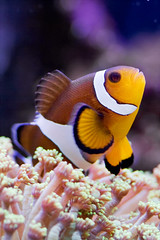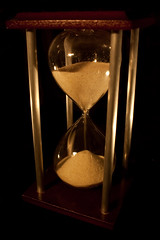Conflict, of course, is a very basic requirement of a good story. But good stories have a lot more going on than arguing (maybe, like, Larry Brooks’s six core competencies of storytelling).
And this isn’t about that.
Earlier this week, I watched the “making of” documentary on the Finding Nemo DVD. While I’m not a huge fan of Disney or Pixar,  I’m very impressed by their storytelling (especially Pixar). And the documentary offered some insight into their story process.
I’m very impressed by their storytelling (especially Pixar). And the documentary offered some insight into their story process.
The director of Finding Nemo, Andrew Stanton, also wrote the screenplay. So after working on that for a year or so, he brought it to Pixar, where it would be made into a movie.
And they basically started all over.
Andrew points out that when you write something, you believe that it works, functionally, humor-wise, etc., but you don’t really know until you get some outside feedback, usually from multiple sources. This is why we collect critique groups and beta readers.
But instead of those methods (well, Andrew may have used those while writing, but this is after he was “done”), Pixar has a feature that’s fairly common in Hollywood: the story department.
I don’t know if this is totally accurate, but the impression in the documentary was that these people eat your babies take your screenplay, nearly demolish it, and then make it better. They identify weak points, plot holes, character problems and boring scenes, and find ways to fix them.
And then there are more writers, who make the jokes better and refine the dialogue.
And then there are still issues and scenes and places where you get stuck, and all that helps is long stretches of time with someone to talk things through and bounce around  ideas, someone who knows the story and the characters as well as you do (and even if we have beta readers, few of us truly have that).
ideas, someone who knows the story and the characters as well as you do (and even if we have beta readers, few of us truly have that).
(And then there are the advantages that visual storytelling has that are a little harder to execute in written storytelling: acting, visual cues, setting that can be taken in in nanoseconds, action that requires no description, etc.)
In all, this story took three and a half years to tell. (So sometimes, all that visual stuff isn’t necessarily an advantage.) It shows in the quality—but man, that’s a lot of patience and stick-to-it-iveness to tell one story.
What do you think? How long do you work on a story before it’s “done”?
Photo credits: clown fish—ecatoncheires; hourglass—Tijs Zwinkels
